Fast Buds: Cannabis Infused Coconut Oil - Why We Switched From Cannabutter, The Best Ways To Make It (Including The Best Gadgets), And Our Top 3 Recipes

- 1. A condensed history of cooking with weed
- 2. Cannabis-infused coconut oil
- 3. Why coconut oil is king for thc infusion
- 4. Slow-cooked cannacoco oil
- 4. a. Equipment:
- 4. b. Ingredients:
- 4. c. Method:
- 5. Quick cannacoco oil
- 5. a. Method:
- 6. The best cannacoco oil gadgets
- 7. The best cannacoco oil recipes
- 7. a. Cannabis-infused coconut oil chocolate bars
- 7. b. Dosed nut butter
- 7. c. Cannabis-infused coconut oil lip balm
- 8. The wrap-up
In the past 3 or 4 years, edibles have gone through what most would consider a true renaissance. Gone are the days when weed brownies and space cakes were your only option. In this brave new world of legal sticky-icky, the possibilities for consuming everyone's favorite plant are starting to look almost endless. From THC-infused pasta sauce to weed gummies, dosed potato chips, and medicated coffee - The phrase "anything you can eat or drink can now be made into an edible" is starting to look less and less untrue. And while it is amazing that these fun products are now at everyone's fingertips (at least in states and countries where pot prohibition is thankfully over), it is really not that hard to make your own edibles at home.
You don't need a big budget or any professional culinary skills - Just a bit of time, some good weed, and the right ingredients and tools. So, stick around as we take a nice long deep dive into the magical world of cannabis-infused coconut oil - Why it is our new go-to infusion base, the two best ways to make it at home, and a shortlist of our favorite recipes to use it with. Plus all of the different new-age gadgets that can help streamline the process. Let's get steamy!
1. A Condensed History of Cooking with Weed
Before we go any further, let's take a step back in time. While the true roots of eating cannabis are impossible to pin down, we can make some educated guesses. While reading "Pot in Pans: A History of Eating Cannabis (2019)" by Robyn Lawrence Griggs, we stumbled across some pretty surprising information, even for us (it can be hard to find mind-boggling weed facts when you write about it day in, day out).
One info point that stood out from the early chapters was using cannabis in cooking could go back much, much further than most of us ever expected. 50,000 odd years in fact. This was a time when our predecessors spent their days and nights gathering whatever food was available. And while it is impossible to know definitively, it seems pretty likely that weed very well may have been on the menu. “Ethnobotanists believe it was one of the first plants they explored,” Lawrence explains, as there is evidence pointing to cannabis being among the first crops actively cultivated. We can't be sure exactly how it was used in the Upper Paleolithic age, but with hemp being such a robust and diverse tool it’s safe to assume that it was used for a wide range of applications.

In terms of actual hard evidence (we are talking recorded history), we have to make a big jump to about a millennia ago. "The first recorded instances of it were in China, but it was more about nutrition and medicine. The hemp side was emphasized more, and the psychoactive part was considered an unfortunate side effect. But in parts of the Middle-East cannabis was embraced more for the psychoactive effects, probably because alcohol consumption is much less prevalent. It was used more as an intoxicant and a relaxant." It was also a vital part of diets throughout the pre-modern world, with records from India, Jamaica, Uzbekistan, and around the Middle East and South East Asia. Bouncing through to more modern times, there were certain waves of popularity in the 1800s and 1900s through Europe and the USA based on techniques and recipes that had been refined over centuries in other parts of the world - but these all came to a fiery end with the introduction of prohibition acts in the early 1930s.
And when it comes to the here and now? Well, the possibilities are only capped by your own imagination. But to make a banging edible you need the best base possible, and in our humble opinion that is definitely cannabis-infused coconut oil!
2. Cannabis-Infused Coconut Oil
There is no one right way to make cannacoco oil (this is the term we are going to be using for the rest of the post). As long as you do the basics right, the end result should work, and work well. But, there are a few things to keep in mind. The first thing to note is that coconut oil has a pretty high saturated fat content. This means it can infuse quite a bit of THC (and other cannabinoids). It also has a relatively low boiling point (76 degrees ℃), which makes it ideal for infusion methods that require lower temperatures - like the ever-popular crockpot method.
The second thing is that, while you can technically use any cannabis to make cannacoco oil, we would recommend using trim. Trim is the leaves and smaller buds that are trimmed off of the colas during the harvesting process. It generally contains a slightly lower concentration of THC than bud - but it also contains a higher concentration of chlorophyll. Chlorophyll is one of the main factors in the "harshness" of smoke, which is why it's important to always dry, trim, and cure your buds correctly.
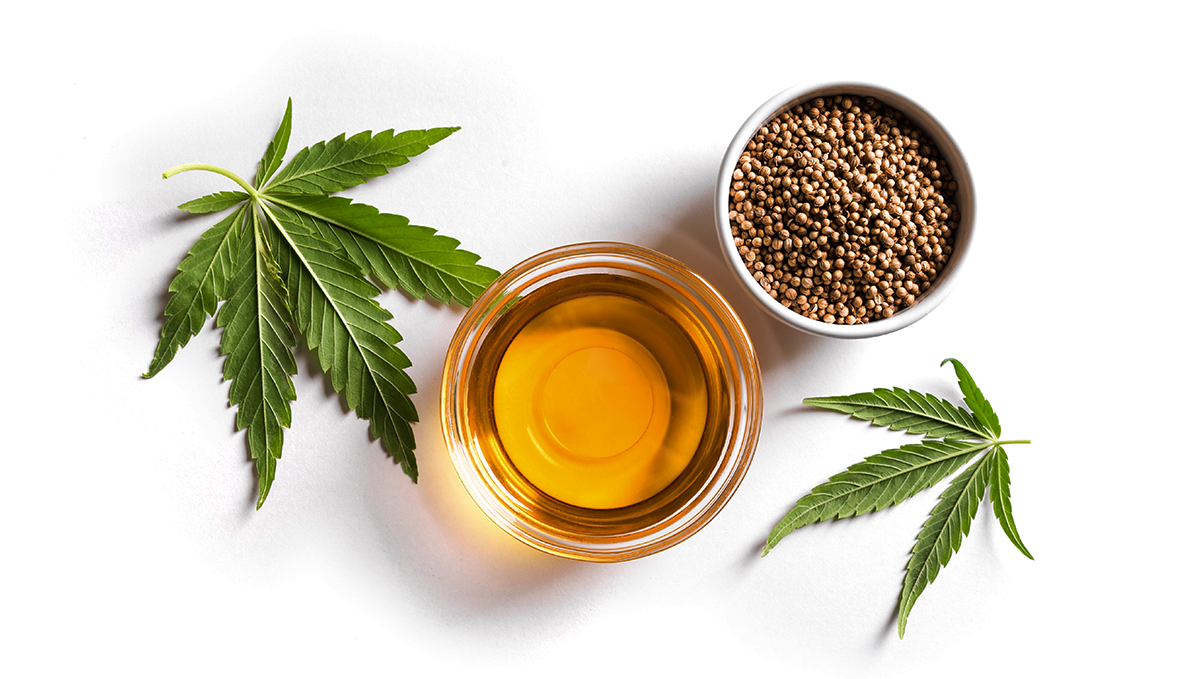
But since we are not concerned with that here, trim is a great choice (if you can get your hands on it). In legal states and countries, you can usually find trim being sold for a fraction of the price of the more in-demand buds. Alternatively, grab some high-quality, easy-to-grow seeds and grow your own stuff (autoflowering seeds are the easiest, fastest option available right now - and they are just as potent as regular seeds). This will provide you with all the trim you could ever want or need!
But, first things first. Every single time you cook with weed, it first needs to be decarboxylated. This is a process of heating the weed to a specific temperature for a specific amount of time, in order to break down the THC-A molecule into its more potent THC form. If you don't do this, your end product may not be as potent. Some decarboxylation will take place during the cooking process, but we would recommend doing it separately first. Plus, it's super easy and only takes about 25 mins. Simply set your over to the very lowest setting it can go to, and place your buds (grind them up a bit first) in an oven-safe dish. You want to get the oven to about 230° F (that's 110C for our mates across the pond). Cover it with tin foil, and stick it in the oven for 25 mins. Once it's out, let it cool and then you are ready to make some oil.
3. Why Coconut Oil is King for THC Infusion
So, now we get to the good stuff. Why is coconut oil such a great choice for weed-infused edibles?
1. It has a high-fat content. This means that it can infuse more THC than other oils (like olive oil), and it also makes for a more potent final product.
2. It has a relatively low boiling point. This is important because it means that you can use lower temperatures when infusing your weed - which is important to preserve the THC.
3. Coconut oil is delicious, and the flavor goes well with weed. It's also really versatile and can be used to make both sweet and savory dishes.
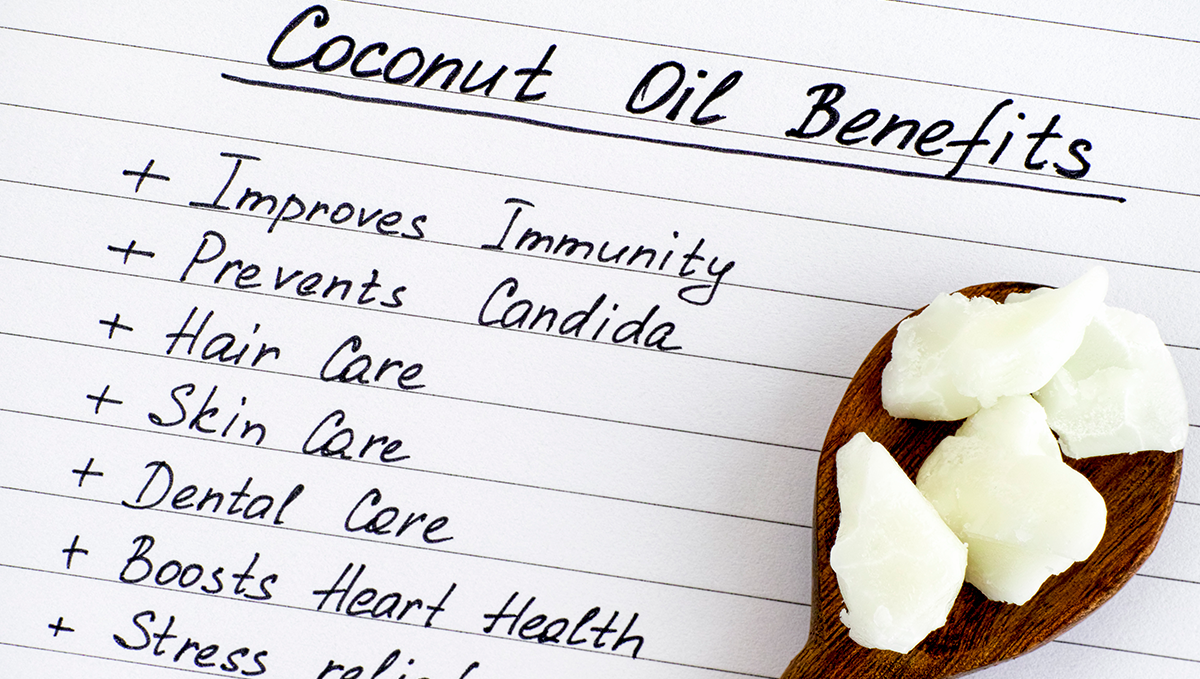
4. Coconut oil is healthy. Unlike other oils, coconut oil is packed with nutrients like lauric acid, which has been shown to have numerous health benefits.
5. Coconut oil is totally vegan friendly, and it's super rare for anyone to have allergy issues with it.
Let's take a look at the two most common methods to make cannacoco oil.
4. Slow-Cooked Cannacoco Oil
First up we have the slow cook method. Unless we are in a bit of a rush this is the way we always make our edible base, as it ensures that you get the maximum amount of cannabinoid and terpene extraction. And, it's pretty much impossible to screw up (as long as you keep an eye on it).
Equipment:
- If you have a slow cooker then grab it out. A large saucepan or pot works perfectly also
- Fine metal strainer (like you would use to sift flour) or a piece of cheesecloth. You can even get away with using a clean pillowcase if you don't have either of these on hand
- A large glass or metal bowl
- A Storage jar or bottle (you can use the bottle the oil came in)
Ingredients:
- 10 to 20 grams of decarbed cannabis (less if using high-grade bud, more if using low-grade trim)
- 750 ml extra virgin coconut oil
- 1 liter of tap water (this ensures the mixture doesn't burn)
Method:
Step 1
First, add the water and coconut oil to your slow cooker or saucepan, and set it to medium-high heat.
Step 2
Once the mixture has started to boil, turn the heat down until it is only ever so slightly bubbling, and add in your cannabis.
Step 3
Stir occasionally for the next 4 to 10 hours (the longer the better), making sure that the temperature never goes above 245°F (118°C). as long as you keep it over a low heat then you shouldn't have to worry at all. You can also use the on/off method - keep it over the heat for an hour or so, then off the heat for the next hour, and repeat.
Step 4
If you have a slow cooker, turn it onto the lowest setting and let it bubble away for the same amount of time. Make sure to keep an eye on it and stir it every 30 mins or so.
Step 5
Once the cooking process has finished, set it aside and let it cool all the way down to room temperature.
Step 6
Next up, it's time to strain. Place your strainer or cheesecloth over the bowl, and pour the mixture through it. Once all the liquid has passed through, give it a good squeeze to make sure you get all the oil out of the cannabis residue.
Step 7
What you'll be left with at this point is a lovely pot of water and oil. To help the separation process, place the bowl in the fridge for about an hour until the oil has solidified and risen to the top. Once it has, simply scoop up the oil, and voila - you have some homemade cannacoco oil.
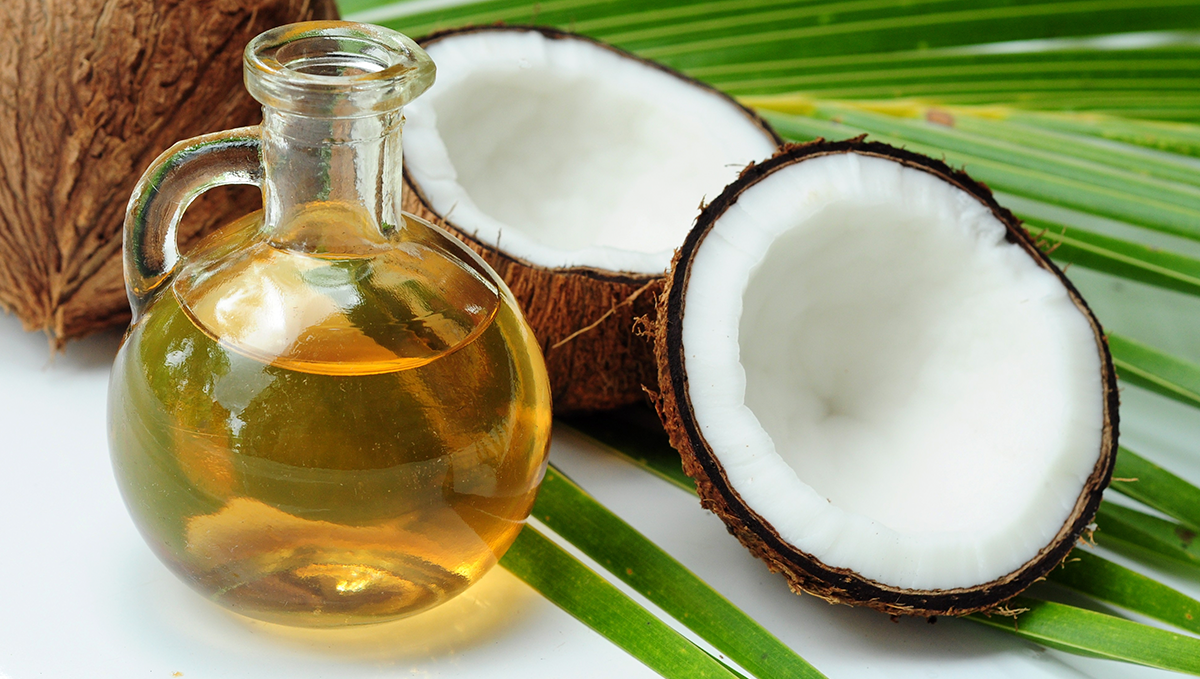
Now all that is left to do is bottle it up and store it in a cool dark place (or the fridge if there is any plant matter that passed through the straining stage).
So there you have it - the best method for making cannacoco oil. But how about if you are in a rush, and don't have the time to invest? Well then, you'll be wanting the quick method then.
5. Quick Cannacoco Oil
As the name suggests, this method is much quicker than the slow cook method, but it is also less effective. this is due to the fact that heating the oil for such a short period of time doesn't allow for full cannabinoid and terpene extraction. However, it will still do the job if you are in a pinch. The equipment needed is exactly the same, as are the ingredients (minus the water).
Method:
1. Simply add the cannabis and oil to your saucepan or slow cooker, and set it to medium-high heat. once you see it starting to boil you can turn the heat down to a low simmer.
2. For this one, you are going to want to stir pretty consistently and cook for no more than about 45 minutes. The mixture should never go above 245°F (118°C), so keep an eye on it and turn the heat down if need be.
3. Once the cooking time is up, take it off the heat and let it cool. Once cooled, strain as before and bottle up your oil. Again, this one will keep in a cool dark place for several months if very well strained, but if there is any plant material that has made it through the straining process then we suggest keeping it in the fridge.
So there you have it - the two best methods for making cannacoco oil.
6. The Best Cannacoco Oil Gadgets
Ok, so we have gone over the 2 main ways to make cannacoco oil. While the process itself is pretty straightforward, if you are wanting to make a super potent mix then it does take a while - so why not simplify the process? This is where gadgets come in super handy, as they simplify the method of making cannacoco a whole heap. Here are some of the best options currently available on the market:
The Magical Butter Machine
This is by far the most popular option when it comes to making cannabutter or cannacoco oil. It is a self-contained unit that does all the hard work for you. Simply add your ingredients, set the timer, and let it do its thing. The machine comes with a stirring paddle, so all you need to do is give it a stir every now and then. It also has an automatic shut-off feature, so you don't have to worry about it overcooking or burning.
The Herbal Infusion Machine
This is a similar gadget to the Magical Butter Machine, but it is specifically designed for making herbal infusions. It has a much larger capacity than the Magical Butter Machine (1.5 liters vs 2.5 liters), so it is perfect for making large batches of oil. It offers 3 different cooking modes, an LED timing unit, and all the accessories you need to produce high-quality infused oil.
The Levo 2.0
This is a new kid on the block and is quickly becoming a popular choice for those wanting to make cannacoco oil. The Livo 2.0 is an all-in-one appliance that can be used for making oil, tinctures, butter, and more. It has a large capacity (2.5 liters) and includes DRY and ACTIVATE (AKA decarboxylation) modes to prep your herbs for infusion. This is actually our number one pick, and while it's not the cheapest option on the market it just does a great job. The build quality is also fantastic.
So there you have it - the best methods and gadgets for cannacoco oil. Give them a try and see which one works best for you.
7. The Best Cannacoco Oil Recipes
One of the best things about cannacoco oil is the versatility it offers. Not only can it be used in cooking, but it can also be used in a variety of topical applications. Here are 3 of our favorite, no-stress recipes:
Cannabis-Infused Coconut Oil Chocolate Bars
These chocolate bars are the perfect treat for those with a sweet tooth. They are easy to make and only require a few simple ingredients.
Ingredients:
- 1 cup cannacoco oil
- 1 cup cocoa powder
- 1 cup honey
- 1 tsp vanilla extract
- You can add any extra ingredients you like or anything you have laying around in the panty. Recently we have been throwing in some nuts (hazelnuts are perfect, but any will do) and sprinkling some dried coconut flakes over the top.
Instructions:
1. Combine all the ingredients in a bowl and mix until well combined.
2. Pour the mixture into an 8x8 inch baking dish, and place in the freezer for 2 hours or until solid.
3. Once solid, cut into squares and enjoy!
Dosed Nut Butter
This recipe is the perfect way to add a little extra something-something to your morning toast. It also works great as a dipping sauce for fruits and vegetables.
Ingredients:
- 1 cup cannacoco oil
- 2 cups of nuts - peanuts, almonds, or cashews all work great for this one
- 1 teaspoon of salt
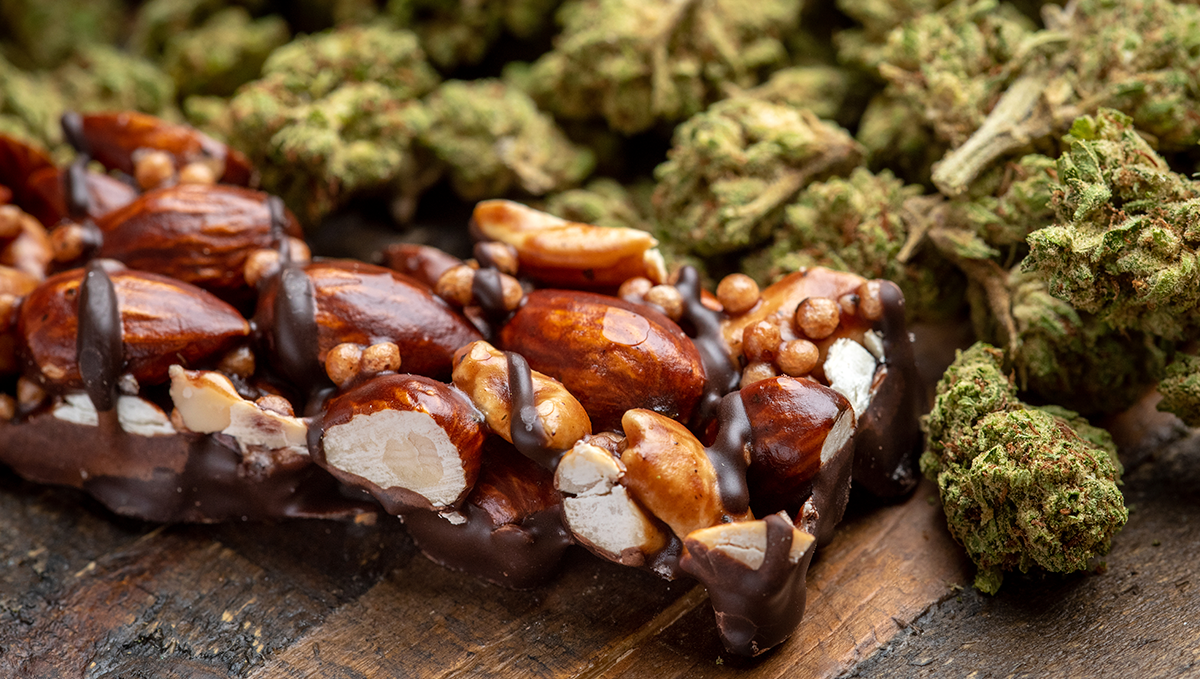
Instructions:
1. Preheat your oven to 350 degrees Fahrenheit.
2. Spread the nuts on a baking sheet, and roast for 10-15 minutes until golden brown.
3. Let the nuts cool, then place them in a food processor or blender with cannacoco oil and salt. Pulse the nuts for 30-second intervals until they start to slightly liquefy, then slowly combine the oil and salt.
Cannabis-Infused Coconut Oil Lip Balm
This lip balm is great for those cold, windy days or after a long day in the sun. It is super easy to make and only requires a few simple ingredients.
Ingredients:
- 1/2 cup cannacoco oil
- 1/4 cup beeswax
- 1 tsp honey
- 10 drops of essential oil (optional)
Instructions:
1. Combine the cannacoco oil and beeswax in a double boiler (a metal bowl over a pot of boiling water), and heat until the beeswax is melted.
2. Remove from heat and stir in the honey and essential oil (if using).
3. Pour the mixture into a lip balm container, and allow it to cool and solidify.
8. The Wrap-Up
Making edibles can seem a little daunting at first, but with cannacoco oil it honestly couldn't be easier. Vegan-friendly, delicious, adaptable, and easy to make at home - even for those among us who hate hanging out in the kitchen. So what are you waiting for? Give it a try, and let us know how you go.









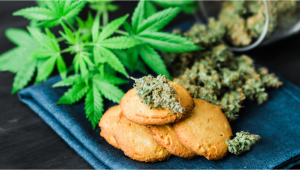




Comments